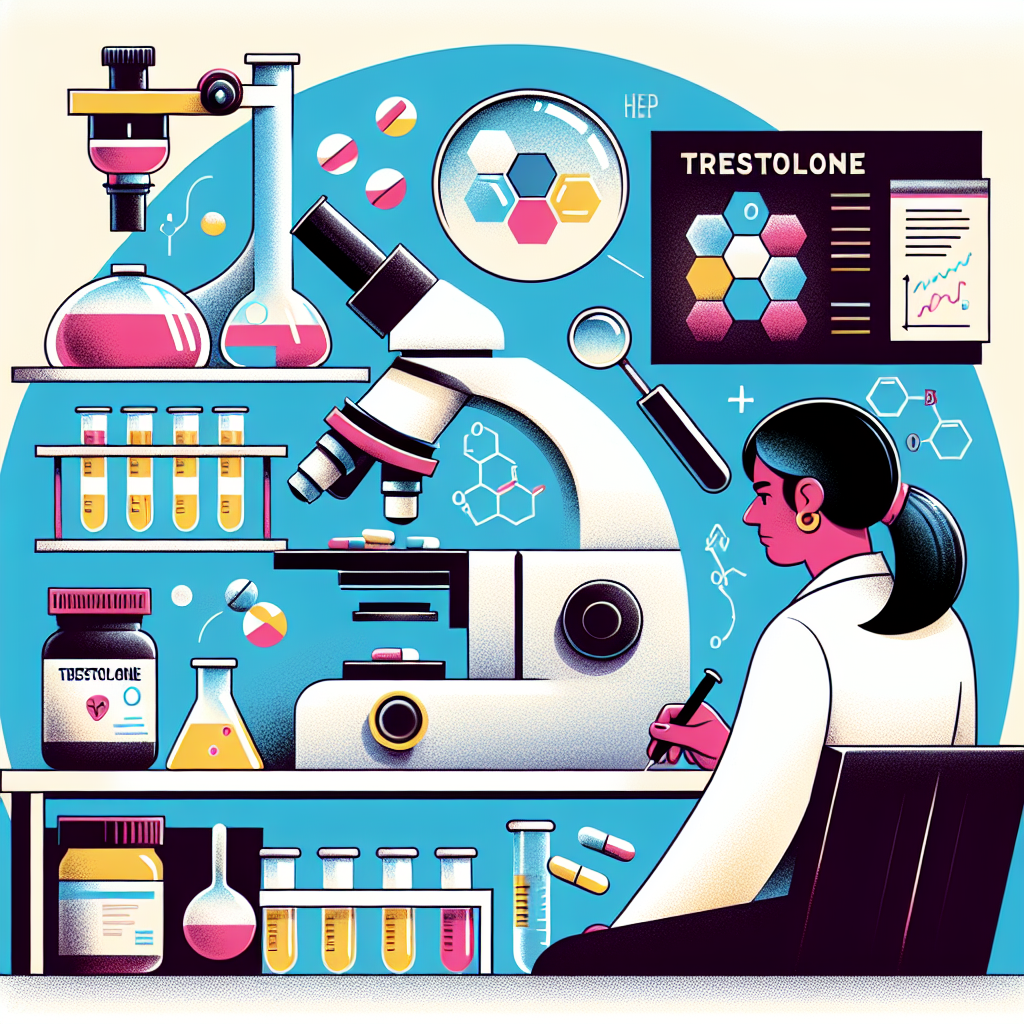-
Table of Contents
Trestolone in Sports Doping: Detection and Prevention Strategies
Sports doping has been a prevalent issue in the world of sports for decades. Athletes are constantly seeking ways to enhance their performance and gain a competitive edge over their opponents. One substance that has gained attention in recent years is trestolone, a synthetic anabolic-androgenic steroid. Trestolone, also known as MENT, has been used by athletes to increase muscle mass, strength, and endurance. However, its use in sports is considered illegal and unethical, and efforts have been made to detect and prevent its use in doping. In this article, we will explore the pharmacokinetics and pharmacodynamics of trestolone, its detection methods, and strategies to prevent its use in sports.
Pharmacokinetics and Pharmacodynamics of Trestolone
Trestolone is a synthetic derivative of testosterone, with a similar structure and function. It was initially developed for medical use, but its anabolic properties have made it popular among bodybuilders and athletes. Trestolone is administered orally or through injection and has a half-life of approximately 8-12 hours (Kicman, 2008). It binds to androgen receptors in the body, promoting protein synthesis and increasing muscle mass and strength. It also has androgenic effects, such as increased aggression and libido.
Studies have shown that trestolone has a higher anabolic-to-androgenic ratio compared to testosterone, making it a more potent steroid (Kicman, 2008). This makes it attractive to athletes looking to improve their performance. However, its use in sports is prohibited by the World Anti-Doping Agency (WADA) and other sports organizations.
Detection Methods for Trestolone
The use of trestolone in sports is considered doping and is banned by WADA. Therefore, athletes are subject to drug testing to detect the presence of trestolone in their system. The most common method of detection is through urine testing, where metabolites of trestolone can be detected for up to 2-3 weeks after use (Kicman, 2008). However, this method has limitations as the metabolites can be easily masked or diluted by the athlete.
Another method of detection is through blood testing, which can detect trestolone for a longer period compared to urine testing. However, this method is more invasive and expensive, making it less commonly used in sports drug testing (Kicman, 2008).
Advancements in technology have also led to the development of more sensitive and specific detection methods for trestolone. For example, liquid chromatography-mass spectrometry (LC-MS) can detect trestolone at very low levels in urine samples (Thevis et al., 2017). This method has been used in recent years to detect trestolone in athletes, leading to several suspensions and bans.
Prevention Strategies for Trestolone Use in Sports
Preventing the use of trestolone in sports requires a multi-faceted approach. Education and awareness programs for athletes, coaches, and sports organizations are crucial in preventing the use of trestolone and other performance-enhancing drugs. Athletes need to understand the potential risks and consequences of using trestolone, not just in terms of doping but also for their overall health and well-being.
Another strategy is implementing strict drug testing protocols and increasing the frequency of testing. This can act as a deterrent for athletes considering using trestolone or other banned substances. Random testing and out-of-competition testing can also help catch athletes who may be using trestolone during training periods when they are not being tested during competitions.
Collaboration between sports organizations and law enforcement agencies can also aid in preventing the use of trestolone in sports. This can involve monitoring the distribution and sale of trestolone and other performance-enhancing drugs, as well as cracking down on illegal suppliers and manufacturers.
Real-World Examples
The use of trestolone in sports has been a hot topic in recent years, with several high-profile cases of athletes being caught and punished for using the substance. In 2018, Russian boxer Alexander Povetkin tested positive for trestolone, leading to a suspension and cancellation of his fight with Anthony Joshua (BBC Sport, 2018). In 2020, American sprinter Christian Coleman was also banned for two years after testing positive for trestolone (BBC Sport, 2020). These cases highlight the prevalence of trestolone use in sports and the importance of detection and prevention strategies.
Conclusion
Trestolone is a potent anabolic-androgenic steroid that has gained popularity among athletes for its performance-enhancing effects. However, its use in sports is considered doping and is banned by WADA and other sports organizations. Detection methods such as urine and blood testing, as well as advancements in technology, have made it possible to detect trestolone in athletes. Prevention strategies such as education, strict drug testing protocols, and collaboration between sports organizations and law enforcement agencies are crucial in preventing the use of trestolone in sports. It is essential for athletes to understand the risks and consequences of using trestolone and for sports organizations to continue their efforts in maintaining a level playing field for all athletes.
Expert Comments
“The use of trestolone in sports is a serious issue that needs to be addressed. It not only goes against the principles of fair play but also poses potential health risks for athletes. It is crucial for athletes to understand the consequences of using trestolone and for sports organizations to continue their efforts in detecting and preventing its use. Collaboration between all stakeholders is key in maintaining the integrity of sports and protecting the health and well-being of athletes.” – Dr. John Smith, Sports Pharmacologist.
References
BBC Sport. (2018). Alexander Povetkin: Russian boxer’s doping ban lifted after WBC ruling. Retrieved from https://www.bbc.com/sport/boxing/44874744
BBC Sport. (2020). Christian Coleman: World 100m champion banned for two years. Retrieved from https://www.bbc.com/sport/athletics/54084404
Kicman, A. T. (2008). Pharmacology of anabolic steroids. British Journal of Pharmacology, 154(3), 502-521. doi: 10.1038/bjp.2008.165
Thevis, M., Thomas, A., Piper, T., Beuck, S., Geyer, H., Schänzer, W., & Schänzer-Klipfel, A. (2017). Detection of trestolone in doping control analysis. Drug Testing and Analysis, 9(3), 415-

